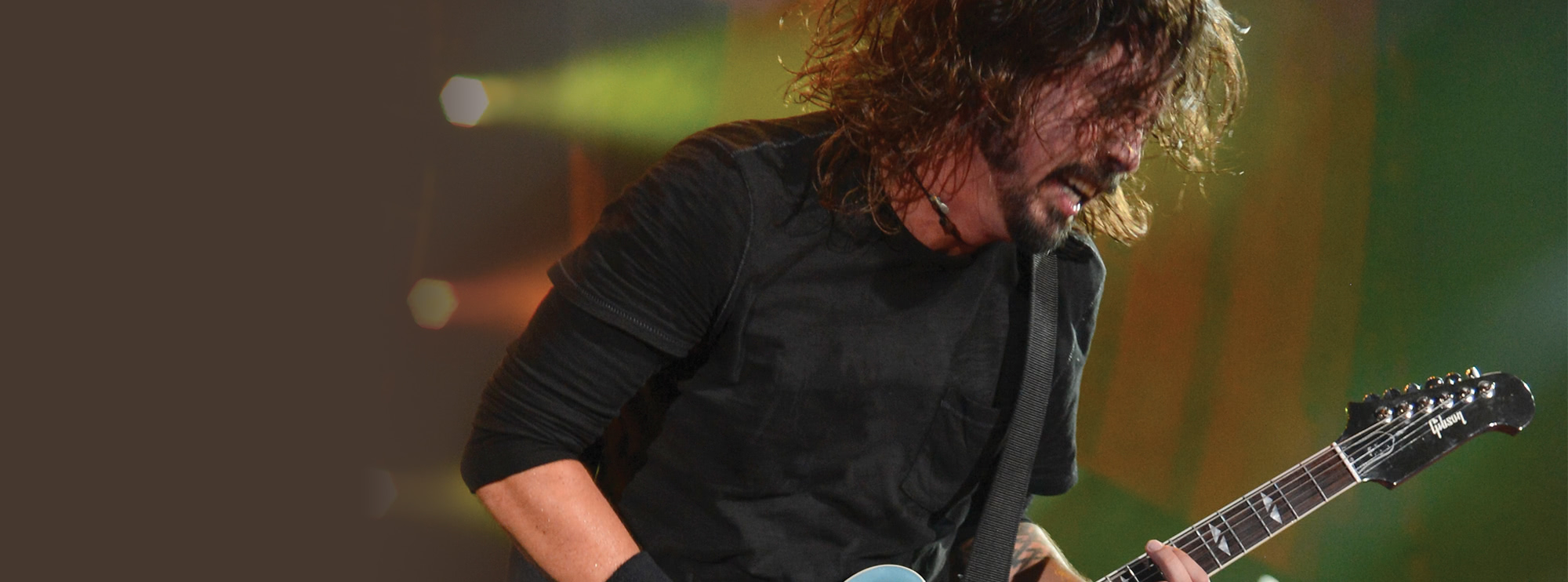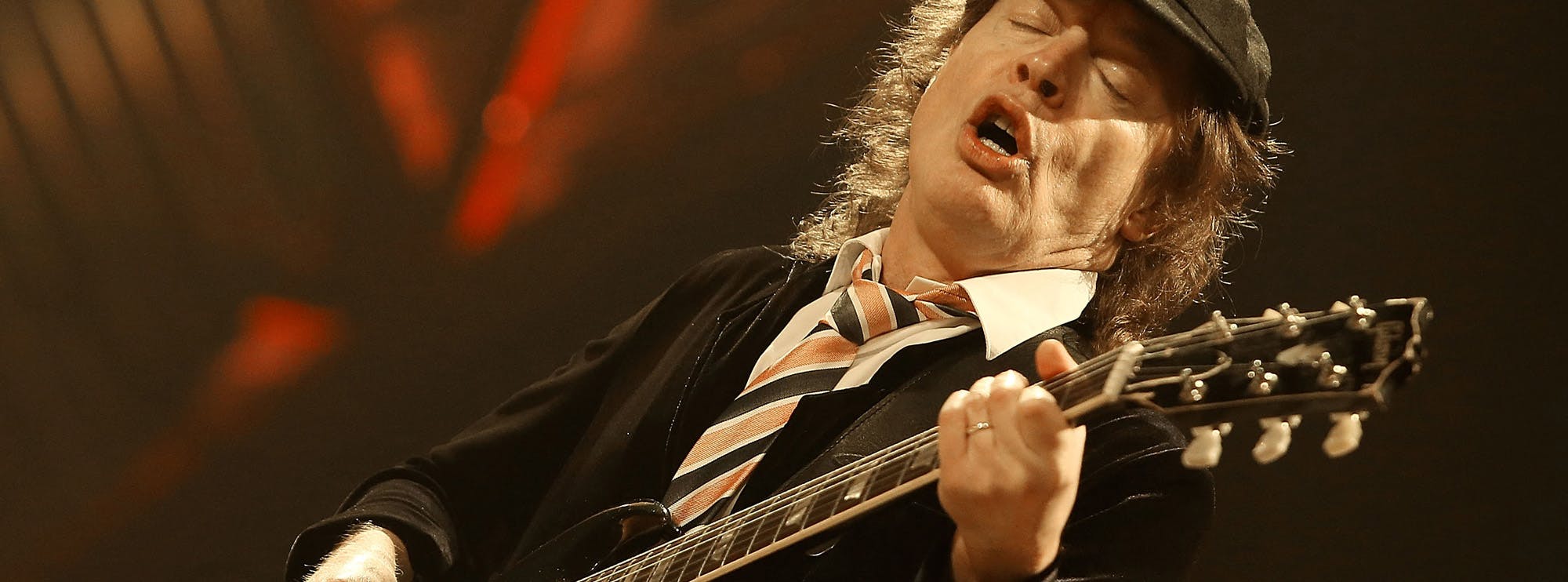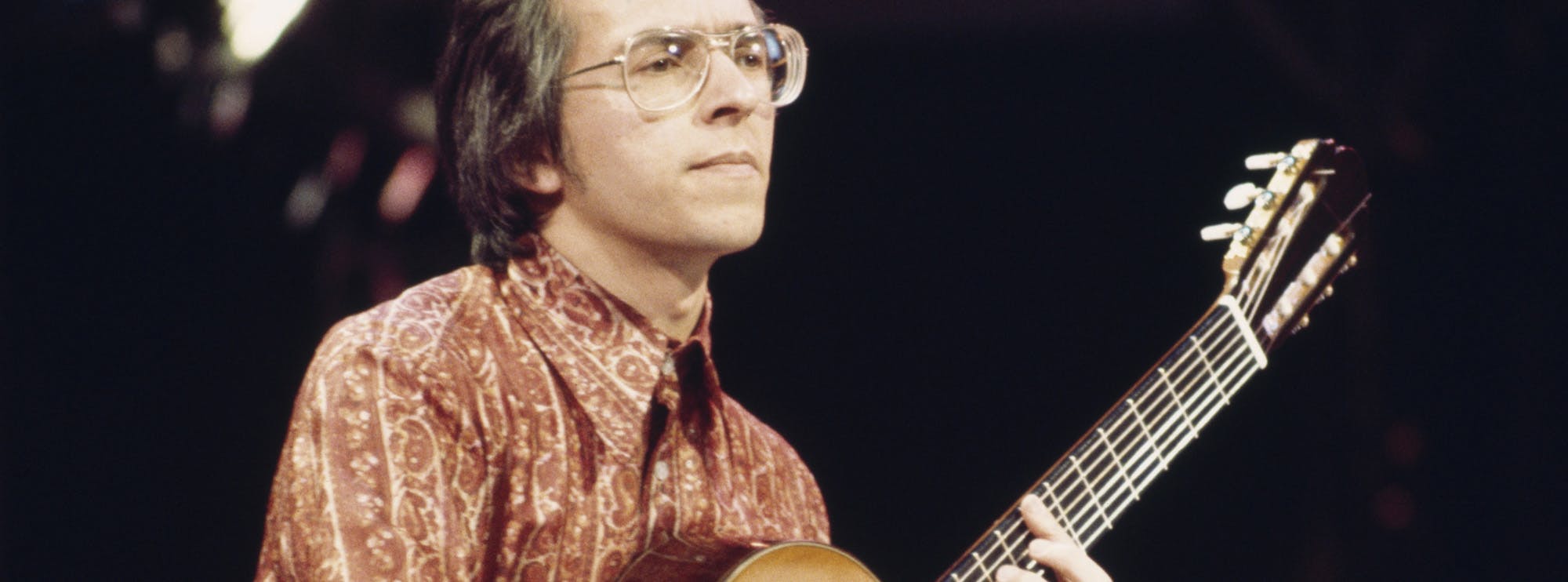Unlike many technical guitarists JP has a great sense of melody and feel, and is as much about tone and phrasing as he is speed. He has a similar approach to equipment, utilising his arsenal of Mesa Boogie amps, with an elaborate switching system mixing rack equipment with stomp boxes and his Fractal Audio Axe FX. His choice of guitar is his signature Ernie Ball Music Man guitar, which has been meticulously tested and developed to suit John’s extreme requirements of an instrument, most recently in the new Majesty guitar.
Dream Theater was formed when school friends and Long Island natives John Petrucci and John Myung attended the Berklee Music School in Boston. Petrucci and Myung met musically like-minded drummer Mike Portnoy, and began jamming songs by Rush and Iron Maiden. Before too long it was obvious that the trio were more serious about their band than studies and finally left the school before completing their studies. John Petrucci enlisted school friends Kevin Moore on keyboards, and Chris Collins on vocals. The band took the name Majesty, and before too long parted company with Collins and enlisted Charlie Dominici on vocals. Due to another band sharing the name Majesty, the band embarked on trying to find a suitable name for their band. They soon settled on the name Dream Theater, suggested by Portnoy’s father, taking the name from a Californian Movie Theater.
In 1989 the newly named Dream Theater released their debut album when “When Day and Dream Unite”. The albums response wasn’t what they had expected, and also saw the departure of Dominici from the position of lead vocals. Following successful battle with their original record label, Dream Theater began writing again and auditioning new singers. They settled on Canadian vocalist James LaBrie and in 1992, following the signing of a new deal, they released “Images and Words”. The single “Pull me Under”, began heavy rotation on both radio and MTV, enabling the band tour extensively in the US, Japan and Europe.
When it comes to complex arrangements, time signature changes, intricate unison riffs, and face melting solo sections, there’s no better band than Dream Theater.
Jamie Humphries
This was the beginning of big things for Dream Theater, as well as several changes in line up. During the final stages of their second album “Awake”, Kevin Moore left the band, and was replace by Derek Sherinian. Sherinian’s spell with the band was short-lived, contributing to the “Change of Seasons” EP and the more commercial orientated “Falling into Infinity”. The latter album was a difficult period for the band, especially for Portnoy who struggled with the outside interference of the record company to make the band more commercially viable. Sherinian was replaced by virtuoso Jordan Rudess. The band was now set to record some of their best work to date, including such albums as “Metropolis Pt2: Scenes from a Memory”, “Train of Thought”, “Octovarium” and “Black Clouds & Silver Linings”.
In 2010, the music community was shocked with the departure of founder member Mike Portnoy. Portnoy had been filling the drum slot with US hard rock band Avenged Sevenfold, as well as embarking on several side projects. Portnoy had stated he wanted to take an extended break from Dream Theater, but the rest of the band rejected the offer, resulting in Portnoy's departure. Dream Theater embarked on a well publicised audition process, documented on YouTube, before finally settling on ex-Extreme and Steve Vai drummer Mike Mangini. Dream Theater continue as a driving force in the progressive Rock/Metal genre, releasing two new albums to date with Mangini on drums, including “a Dramatic Turn of Events”, and “ Dream Theater”
Dream Theater are without a doubt one of the most influential Metal bands of the past 25 years, and have legions of loyal fans around the globe. Through hard work, perseverance, and dedication, Dream Theater are one of those rare bands that have huge success, playing and recording music that they want to play, and what their fans want to hear. Dream Theater are now in another exciting chapter of their long career. For this John Petrucci style guitar lesson Tech Session I wanted to do something a little different to what I’ve seen done before. Andy James has already covered John Petrucci for us. When I did some research online there seemed to be lots of lessons looking at John’s guitar technique, and licks. I agree that, yes, this is what people want, but at the same time there is a lot more than just licks to be learnt from John Petrucci’s guitar playing. So I decided to have a bit of fun with this feature and as well as look at some John Petrucci style licks, I wanted to also focus on prog metal riffs and rhythm playing, as well as looking at the use of unusual time signatures. Another factor I considered when putting this track together was the fact that John uses quite a few drop tunings, as well as seven string guitars. I’ve decided to keep everything in standard tuning, which obviously will help those of you that have floating whammy bar systems. The track I’ve composed is based on elements from both early and later Dream Theater, and is divided into five different sections.
First section:
To kick things off let's take a look at the first section, which is our riff section, which is based loosely “Erotomania”. The first riff is based around a bar of 7/8, or you could see it as a bar of 4/4 followed by a bar of 3/4. For ease of counting I saw the meter as being a quarter note count, and treated the riff as a bar of 4/4 followed by a bar of 3/4. The riff itself features a pedalling sequences on the 6th string, based around F# Phrygian, all though at various points the riff extends to include a major 3rd as well as a minor 3rd, so you could also view it as using notes from F# Altered scale. The riff basically repeats, with the second half of the sequence opening up more sonically, so you should remove your palm mute for a more open and aggressive sound. On the 7th bar I paid homage to the original “Erotomania” riff by borrowing a chromatic sequence from the track, but changed the feel of the original riff to add some colour and variation.
Our next riff is a slightly heavier section, based around a four bar sequence with a much more straight feel based around a 4/4 time signature. For this riff I was inspired by a section from the track “The Mirror”. This riff uses the chords of E5, Bb5 and D5, and starts off with a heavy powerful half time feel. When the riff cycle starts again you will notice that the drums launch into a double time feel for two bars, whilst the riff remains the same. Take care with your counting during this section, and make sure that you keep the riff solid and heavy. I’d like to thank bassist Dave Marks for supplying the Rudess style synth samples for this riff section.
Second section:
The next section is seen as a “link” section, from our heavy riffs, into the Floyd section. Here our time signature changes again, with us now introducing a 6/4 time signature. This section is all about counting with the emphasis on the drum fills, with the guitars accenting the cymbal crashes. This section makes use of the chords of F#5, G5, E5, Gsus2, and finally Fsus2, and you will really have to concentrate on the counting and being tight!
Floyd style section:
Our next section is a mellow Pink Floyd-like section, which is inspired by sections from both “Sacrifice Sons” and “The Shattered Fortress”. For this section once again we see a time signature change, with the value of our pulse or beat changing. Although the steady beat stays the same, its role changes from a quarter note to an eighth note, seeing a meter shift from 6/4 to 6/8. If this is confusing, just listen to the track and also my performance on the video and you’ll notice that you can keep tapping your foot the same thought all of the sections. This type of shift between different time signatures, with the beat remaining the same, yet its value changing is referred to as metric modulation. This section features a lush acoustic guitar and keyboard backing, providing the perfect vehicle for some sparse chord arpeggios. This section is based around Emadd9, Bm, Am and F#m7b5. Tonally for this section I engaged my MXR EVH phase 90 pedal, which really gave this section a Gilmour vibe. This section concludes with some very straight stabs, on a 4/4 time signature bar, that leads us back to our main opening riff.
Guitar solo:
OK it's solo section time, and for this section I chose to solo over a variation of our opening riff. Our opening part of the solo uses F# Dorian, and F# minor pentatonic. Although the Dorian scale has a major 2nd and the Phrygian scale, which is what our riff uses, has a minor 2nd, you don’t really notice the clash, plus Dorian adds a slightly less stylistic sound to the solo than Phrygian. The open licks are reminiscent to the open section of “Under a Glass Moon”, with a bluesy unison bend, leading into some slides on the B string. This is followed with a bluesy pentatonic lick, with the solo concluding with an F#m7 arpeggio performed with string skipping. I continue with the “Under a Glass Moon” vibe, with some sliding 5th’s performed on the 1st and 2nd strings, this section concludes with a bluesy lick based around F# blues and F# minor pentatonic. The solo concludes with an F#m7 arpeggio, played from the minor 3rd, performed with sweep picking and tapping.
The second half of the solo kicks off with an extended legato run using three note per string fingerings and position shifts, based around the F# Phrygian mode. Take care with the position and keep your hand nice and relaxed. Also make sure when you shift positions that your thumb moves with your hand, which is something many people don’t do. They keep their thumb in one position and shift until they have to move the thumb. Our final licks are based around a bending figure, plus some fast picking utilising positions shifts on the B string. This lick is based on a lick heard in instrumental track “Hell’s Kitchen”. Often when playing a figure like this John will stay on the last note of the figure and play it with fast tremolo picking, repeating the final note.
Getting the sound:
As regard tone, as I mentioned before JP uses Mesa Boogie amps, with signature Musicman guitars, and a variety of rack and pedal based effects units. For this track I used the new Musicman John Petrucci Majesty guitar, running into a Blackstar HT5 valve head. I also used an MXK EVH Phaser for the clean section. For the backing track recording I also used the Majesty for all the electric parts and also for the acoustic parts, which were recorded using the Piezo pickup. For the backing track guitars I used a Cornford MK50 head.
Enjoy!
About The Tutor
Tutor Profile
Jamie Humphries
Jamie is one of the mainstays of LickLibrary, having a stream of hugely successful best selling DVDs, Jamie is best known as Brian May's sideman who he's played shows with all over the world. Aside from this Jamie is a hugely popular clinician working all over the world with Ernie...



